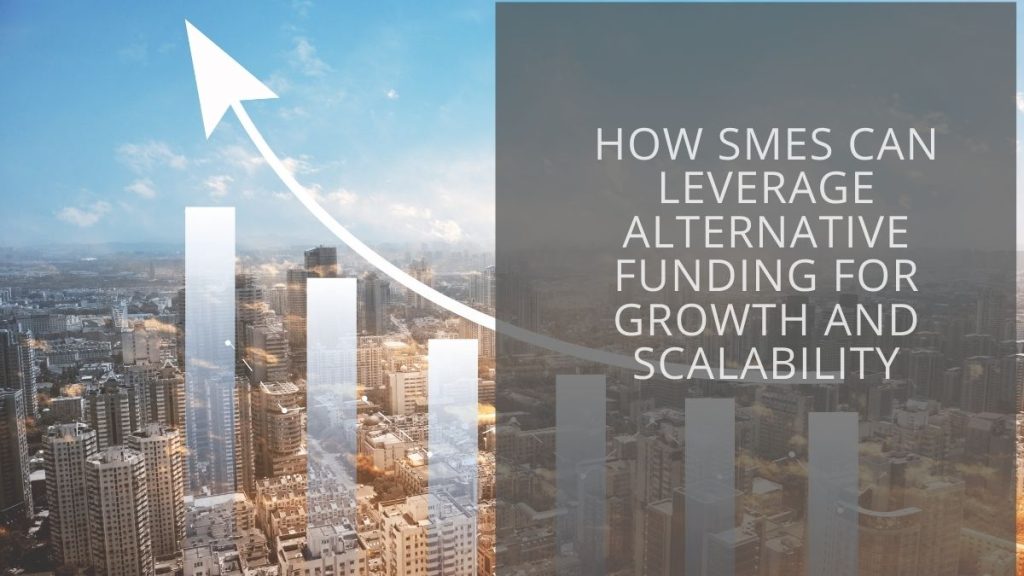Finding Funding For Sustainable Development In Your SME

Table of Contents
Identifying Funding Opportunities for Sustainable Development in Your SME
Securing funding for sustainable development requires a multi-pronged approach. Let's examine the key avenues available to your SME.
Exploring Government Grants and Subsidies
Governments at all levels – local, regional, national, and even international – recognize the importance of sustainable business practices and often offer grants and subsidies to support SMEs in their green initiatives. These programs can significantly reduce the financial burden of implementing sustainable technologies and processes.
- Examples of grant programs: Many countries have dedicated programs for renewable energy adoption, waste reduction, energy efficiency improvements, and sustainable supply chain development. Research programs specific to your location and industry.
- Eligibility criteria: Eligibility criteria vary widely depending on the program, often focusing on factors like business size, industry, project scope, and environmental impact.
- Application processes: Applications usually involve detailed proposals outlining the project's goals, methodology, budget, and anticipated impact. Deadlines are crucial, so stay organized and plan ahead.
- Finding grant information: Utilize online resources like government websites, industry associations, and specialized grant databases to locate relevant programs.
Securing Loans from Green Banks and Financial Institutions
Traditional lenders are increasingly recognizing the importance of sustainable development. Green banks and other financial institutions now offer specialized loans designed specifically for environmentally friendly projects. These "green loans" often come with attractive terms, including lower interest rates and longer repayment periods, incentivizing sustainable investments.
- Types of green loans: These loans can finance various projects, such as energy efficiency upgrades, renewable energy installations, sustainable supply chain improvements, and waste management systems.
- Interest rates and repayment terms: Interest rates are typically competitive, and repayment terms are often tailored to the project's timeframe and cash flow projections.
- Eligibility criteria: Lenders typically assess the environmental impact, financial viability, and creditworthiness of the applicant.
- Finding green lenders: Research local and national green banks and financial institutions with a strong track record in sustainable finance.
Attracting Impact Investors and Venture Capital
The rise of ESG (Environmental, Social, and Governance) investing and impact investing has created a new pool of funding for businesses committed to sustainability. Impact investors and venture capitalists are actively seeking opportunities to invest in companies with strong environmental and social impact profiles.
- Creating an attractive investment pitch: A compelling investment pitch needs to clearly articulate your company's mission, market opportunity, financial projections, and positive social and environmental impact. Highlight your sustainability metrics and demonstrate clear return on investment (ROI) potential.
- Understanding investor expectations: Impact investors often have specific criteria for evaluating investments, focusing on measurable social and environmental impact alongside financial returns.
- Due diligence processes: Be prepared for a thorough due diligence process to validate your claims and demonstrate the project’s viability.
- Networking with investors: Attend industry events, connect with relevant networks, and actively seek opportunities to present your business plan to potential investors.
Developing a Strong Funding Proposal for Your Sustainable Project
A well-structured funding proposal is critical for securing financial support. Let’s focus on key elements to ensure your proposal stands out.
Defining Measurable Sustainability Goals
Before seeking funding, define clear and measurable sustainability goals. This is essential for demonstrating the impact of your project and proving its value to potential funders. Using the SMART framework (Specific, Measurable, Achievable, Relevant, Time-bound) is crucial.
- Examples of SMART goals: "Reduce carbon emissions by 20% by 2025 by switching to renewable energy," or "Divert 50% of waste from landfills by 2024 through improved recycling practices."
- Metrics for measuring impact: Choose key performance indicators (KPIs) to track your progress towards these goals, such as energy consumption, waste reduction rates, water usage, and emissions.
- Reporting requirements: Understand the reporting requirements of potential funders and ensure your proposal includes a clear plan for monitoring and reporting your progress.
Creating a Compelling Business Plan
A comprehensive business plan is the cornerstone of any successful funding application. It demonstrates the financial viability of your project and its potential for both financial and social returns.
- Key components of a business plan: Include an executive summary, market analysis, detailed description of your sustainable project, financial projections (revenue, expenses, profitability), and a clear plan for implementation.
- Showcasing the return on investment (ROI): Clearly articulate how the sustainable project will generate a positive return on investment for the funders, demonstrating both financial and environmental returns.
Demonstrating Environmental and Social Impact
Effectively communicate the positive environmental and social impact of your proposed project. This is crucial for attracting both traditional lenders and impact investors.
- Using data and evidence: Support your claims with quantifiable data and evidence, demonstrating the positive outcomes of your project.
- Showcasing certifications: Certifications such as B Corp certification can add credibility and demonstrate your commitment to sustainability.
- Testimonials: Include testimonials from stakeholders who can attest to the positive impact of your work.
Conclusion
Finding funding for sustainable development in your SME requires a proactive approach, a well-defined plan, strong financial projections, and effective communication of the project’s impact. By exploring government grants, green loans, and impact investors, and developing a compelling funding proposal, you can significantly increase your chances of securing the necessary financial resources. Start your journey towards sustainable growth today! Explore the various funding opportunities available for your SME's sustainable development initiatives. Don't hesitate to contact us if you need further assistance in securing funding for your green projects. We can help you connect with relevant resources and guide you through the funding process.

Featured Posts
-
 Nos Alive 2025 Everything You Need To Know About Headliners And Tickets
May 19, 2025
Nos Alive 2025 Everything You Need To Know About Headliners And Tickets
May 19, 2025 -
 Eurovision 2025 Dates Participants And Predictions
May 19, 2025
Eurovision 2025 Dates Participants And Predictions
May 19, 2025 -
 Sveriges Eurovision Hoppet Svt S Plan Om Kaj Vinner I Basel
May 19, 2025
Sveriges Eurovision Hoppet Svt S Plan Om Kaj Vinner I Basel
May 19, 2025 -
 Alwkalt Alwtnyt Llielam Qdas Alqyamt Fy Dyr Sydt Allwyzt
May 19, 2025
Alwkalt Alwtnyt Llielam Qdas Alqyamt Fy Dyr Sydt Allwyzt
May 19, 2025 -
 Eurovision 2026 Bud Fran Oernskoeldsvik
May 19, 2025
Eurovision 2026 Bud Fran Oernskoeldsvik
May 19, 2025
Latest Posts
-
 L Tzoymis Kai I Enallaktiki Toy Gia To Kypriako O Dromos Toy Kateynasmoy
May 19, 2025
L Tzoymis Kai I Enallaktiki Toy Gia To Kypriako O Dromos Toy Kateynasmoy
May 19, 2025 -
 To Kypriako Zitima Kateynasmos I Antiparathesi I T Hesi Toy L Tzoymi
May 19, 2025
To Kypriako Zitima Kateynasmos I Antiparathesi I T Hesi Toy L Tzoymi
May 19, 2025 -
 Times Kaysimon Kypros Enimeromenos Odigos
May 19, 2025
Times Kaysimon Kypros Enimeromenos Odigos
May 19, 2025 -
 Kypriako I Simasia Toy Kateynasmoy Enanti Tis Antithesis
May 19, 2025
Kypriako I Simasia Toy Kateynasmoy Enanti Tis Antithesis
May 19, 2025 -
 Anazitisi Gia Fthina Kaysima I Kypros Se Arithmoys
May 19, 2025
Anazitisi Gia Fthina Kaysima I Kypros Se Arithmoys
May 19, 2025
